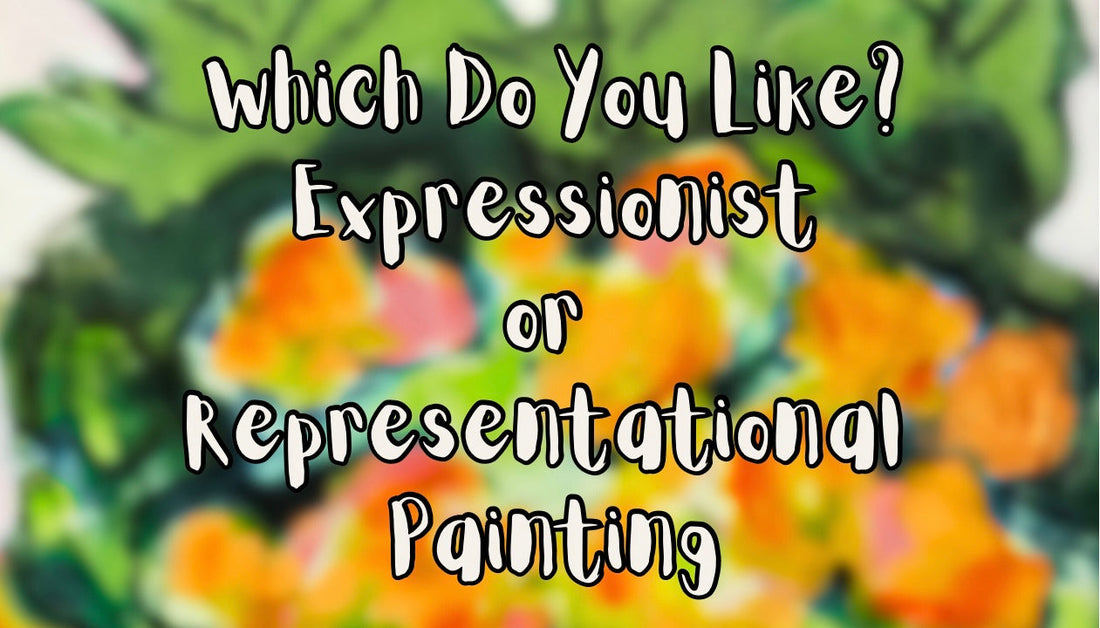
Expressionist vs Representational Painting
Share
Expressionist vs. Representational Painting: A Creative Comparison Through My Studio Practice
When people think of painting, they often picture one of two things: a bold, emotional abstraction or a serene, recognizable scene. These contrasting impulses—expressionism and representation—are central to my own art practice. As someone who works in both styles, I find myself constantly moving between the emotional and the observational.
In this post, I’ll explore the key differences between expressionist and representational painting, using some of my own pieces to illustrate how both styles can speak to different experiences and collectors.
What Is Representational Painting?
Representational art depicts subjects as they appear in the visible world. It could be a flower on a windowsill, a bowl of lemons, or the way sunlight hits the water. In my still life work, representation often begins with direct observation—studying the way objects relate to each other in space and light.
Example from My Work:

“Patio Flowers” (24” x 18”, oil on canvas)
This piece was inspired by a summer morning at our cottage. The flowers are arranged just as I saw them, but the mood is serene and grounded. The painting is about presence, attention, and the quiet joy of noticing.
What Is Expressionist Painting?
Expressionist painting emphasizes emotion and inner experience over visual accuracy. It often involves gestural brushstrokes, bold color choices, and abstract forms. These are the works where I let instinct lead.
Example from My Work

“Even Flowers Get the Blues” (acrylic on canvas)
While it may appear to reference a bouquet, this painting is really about emotion. The layered blues and loose forms express a mood of longing and quiet intensity. It’s a reflection of a feeling, not a scene.

“The Last Rose” (mixed media on canvas)
Though loosely inspired by a real flower, this painting pushes far beyond realism. It became an abstract meditation on memory and endings, with expressive color choices guiding the viewer into something deeper and more personal.
Emotion vs. Observation—Or Both?
My work often lives in the space between the two. A painting may begin as a still life or landscape, but as I work, emotion enters the brushwork. The boundaries blur. Representation gives me a starting point. Expression gives me freedom.
For instance, in my landscape-inspired paintings, the rocks and trees from Northern Ontario are real—but they are filtered through memory, intuition, and mood. The result is often a hybrid: not quite abstract, not quite literal.
Which Style Resonates With You?
Some collectors are drawn to the calm familiarity of representational art; others crave the energy of the unknown found in expressive work. Both have a place in my studio—and in my heart.
- Representational painting invites stillness, structure, and visual clarity.
- Expressionist painting offers emotion, gesture, and personal intensity.
Final Thoughts
Expressionism and representation are not opposites—they are languages. As an artist, I speak both. Whether I’m painting a vase of flowers or the wild Northern landscape, I’m always choosing which voice to use: the one rooted in reality, or the one that lets emotion rise to the surface.
What kind of painting speaks to you—the one that reflects the world, or the one that reflects your soul?

